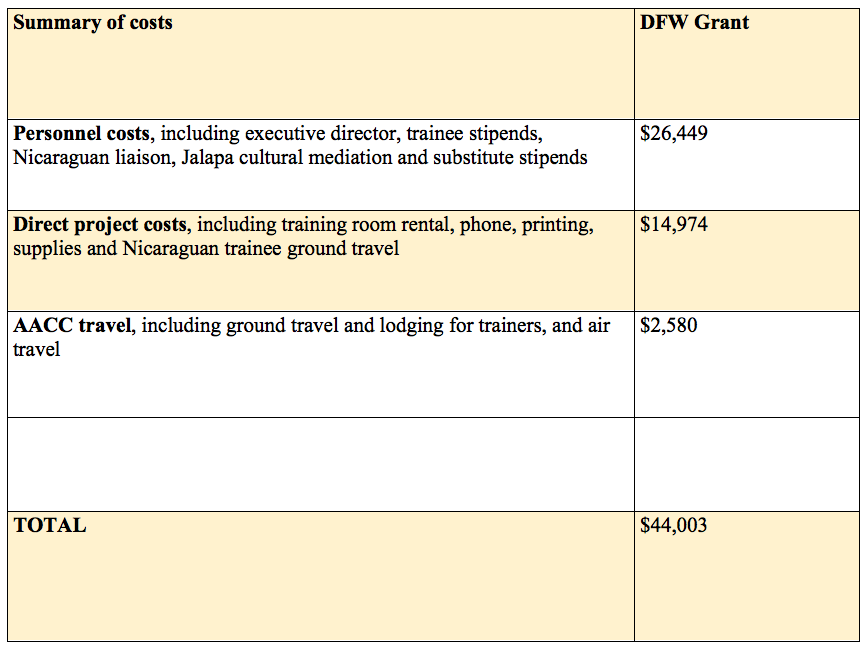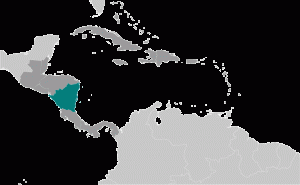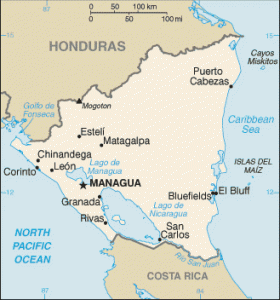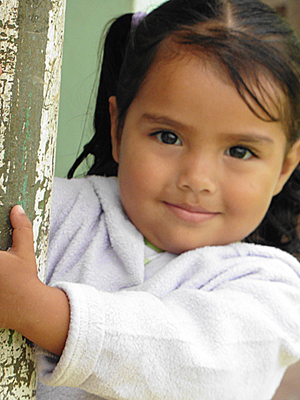
Mission
AACC strives to reduce the impact of poverty on marginalized populations through compassionate, holistic education to enable empowerment of primary caregivers, nutritional adequacy and preventative healthcare, special needs therapeutic support and sustainable community and economic development. This project focuses on education and capacity building for high-risk, impoverished women and children in Nicaragua with the intent of decreasing infant and maternal mortality, malnutrition, as well as preventable health and developmental complications.
Life Challenges of the Women Served
The most pressing issues in rural Nicaragua are 1. high birth rates among adolescents that perpetuate a cycle of poverty and low educational attainment (the average literacy rate is 50 percent); 2. a maternal mortality rate of 230 deaths/100,000 live births, where 83 percent of maternal deaths result from limited prenatal education and access to medical care and 29 percent of hospital admissions are maternal-related health issues; 3. an infant mortality rate of 20.36 deaths/1,000 live births; and 4. a 40 percent rate of chronic infant malnutrition.
Fifty percent of household members in Jalapa are illiterate. This lack of education severely limits understanding of adequate nutrition and financial security, which in turn limits access to healthcare services. Additionally, the limited education of women reduces understanding of the complexities related to pregnancy and the need for family planning to prevent the cycle of poverty.
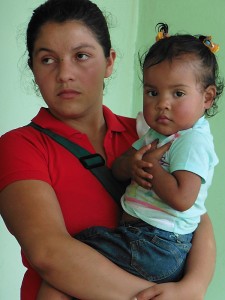 Many Nicaraguan women spend at least part of their lives as single mothers, partially due to the early initiation of sexual activity and abandonment by men who have left the village to seek employment. Thirty-eight percent of women are sexually active by the age of 16 and 73 percent by the age of 19. Poor prenatal care, inadequate nutrition and lack of maternal education increase the health risks to newborns, which include respiratory disorders, hypoxia and birth asphyxia, and digestive disorders.
Many Nicaraguan women spend at least part of their lives as single mothers, partially due to the early initiation of sexual activity and abandonment by men who have left the village to seek employment. Thirty-eight percent of women are sexually active by the age of 16 and 73 percent by the age of 19. Poor prenatal care, inadequate nutrition and lack of maternal education increase the health risks to newborns, which include respiratory disorders, hypoxia and birth asphyxia, and digestive disorders.
These issues are even more severe in the rural areas surrounding Jalapa. These villages are typically located in inaccessible mountainous areas without public transportation or health clinics, requiring residents to walk 2 – 20 km (1.2 – 12.4 miles) for healthcare. Sending children to school instead of working in the field for $2 a day to contribute to family expenses is a new concept for these villagers. This severe level of poverty and isolation directly increases all of the target issues of this project.
The Nicaraguan public healthcare system is inefficient, often inaccessible, with poor infrastructure and limited sharing of information. Lack of education regarding the biological aspects of pregnancy leads to a high incidence of teen pregnancy, particularly in a culture where early sexual activity is prevalent. Lack of education and general poverty also contribute directly to nutritional inadequacy, which is the root for many medical concerns, including mortality.
Factors contributing to high rates of maternal and infant mortality include lack of access to medical services, high fertility rates and domestic violence. Pregnant women who experience domestic violence (largely under-reported) are at increased risk for infants with low birth weights, premature births, and maternal and infant mortality. Delays in seeking healthcare are influenced by economic barriers, community perceptions of maternal health services and by the dominant role of men in the decision-making process.
The Project
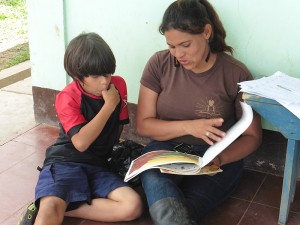 This project will provide direct services to a total of 830 pregnant women and their infants residing in Casa Materna (a local house where women from rural Jalapa Valley can stay for their last weeks of pregnancy so they are near the hospital for delivery) or the outlying communities of Linda Vista and Escambray. The outlying communities selected for this project were chosen because the impact of poverty is severe. The isolation of Linda Vista results in walking up to three kilometers each morning to get water for the day, no electricity or access to schools. Escambray has a high rate of teen pregnancy, with over 14 girls under the age of 18 currently pregnant.
This project will provide direct services to a total of 830 pregnant women and their infants residing in Casa Materna (a local house where women from rural Jalapa Valley can stay for their last weeks of pregnancy so they are near the hospital for delivery) or the outlying communities of Linda Vista and Escambray. The outlying communities selected for this project were chosen because the impact of poverty is severe. The isolation of Linda Vista results in walking up to three kilometers each morning to get water for the day, no electricity or access to schools. Escambray has a high rate of teen pregnancy, with over 14 girls under the age of 18 currently pregnant.
The goal of the New Mothers Education Project is to provide a training program that certifies 10 women residing in or near Jalapa, Nicaragua as ongoing trainers providing education on prenatal care, labor and delivery, breastfeeding, the new mother’s health, nutrition and infant development in the first year of life.
Four health and educational professionals from AACC will provide three-phase training to the trainees. Each of the 10 trainees will receive $1.25/hour for 8 hours each day they attend the training, as well as during project implementation in order to continue supporting their own families.
Phase 1 includes announcement of the project, selection of 10 local trainees, and the provision of four weeks’ training to the trainees on sexual-reproduction education, nutrition, prenatal care and labor/delivery. Training time is half classroom/half field work. After training, trainees provide education through community workshops and home visits for three months to the pregnant women who participated in the complete program from Casa Materna and the outlying communities of Linda Vista, and Escambray. These communities were specifically chosen because of the isolated location and high rate of teen pregnancy. At the completion of Phase 1 the AACC executive director will conclude with an evaluation of each trainee’s skills and knowledge and issue Certificates of Completion.
Phase 2 includes four weeks’ training to the 10 trainees (half classroom/half fieldwork) on infant and postnatal care, breastfeeding and the Kangaroo Care bonding model. Trainees then provide education through workshops and home visits for three months to the new mothers from Phase 1, while simultaneously providing Phase 1 education in the same three locations with new pregnant women.
Phase 3 provides a 3-week child development curriculum to teach infant care and child development. As part of the workshop’s focus on nutrition, education is included on the building and use of safe, fuel-efficient stoves, baking, and the creation of patio gardens (including a supply of seeds and fruit trees) to increase family nutrition. Four ovens will be built in the project communities because the current stoves in use create high respiratory health risks and impact increasing deforestation. The baking instruction provided increases household nutrition and provides an opportunity to increase family revenue by selling baked goods in the community. Due to lack of potable water, Linda Vista will be provided with 40 home water filters.
Sustainable Development Goals
![]()
![]()
![]()
![]()
![]()
![]()
Questions for Discussion
- How do you think the combination of field work and classroom training will help prepare trainees to educate women about their health and their children’s health?
- How do you think direct education about infant care and child development will impact future generations in rural areas of Nicaragua?
- Why is it important that local women introduce education and healthcare in isolated communities?
How the Grant Will be Used
DFW’s donation of $44,003 over two years will pay for implementation of the New Mothers Education Project through the certification of 10 women residing in or near Jalapa, Nicaragua as ongoing trainers providing education on prenatal care, labor and delivery, breastfeeding, the new mother’s health, nutrition and infant development in the first year of life. The project budget includes trainee stipends and travel costs, training costs and supplies.
Why We Love This Project/Organization
We love this project because of its focus on reducing maternal and child mortality in isolated communities of Jalapa, Nicaragua. By providing trained healthcare workers and education to under-resourced communities, AACC is furthering the reach of health services, supporting mothers and vulnerable newborns and allowing women and girls in these communities to have opportunities to improve the economic outlook for their families.
Evidence of Success
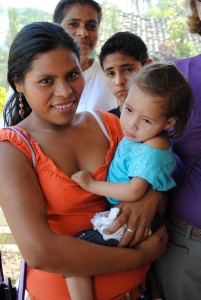 The goal is for the health of the prenatal mother and her newborn to increase through health education and better nutrition, reducing the need for medical follow-ups to address preventable problems. Prenatal education can reduce problems such as hypertension, imbalanced diets and inadequate exercise and increase relationship support impacting emotional and psychological health. Cognitive and motor development of the baby should increase through the mother learning how to play and stimulate the baby. Health education should decrease unplanned pregnancies. Both maternal and infant mortality are expected to decrease as general health, education and nutrition increase.
The goal is for the health of the prenatal mother and her newborn to increase through health education and better nutrition, reducing the need for medical follow-ups to address preventable problems. Prenatal education can reduce problems such as hypertension, imbalanced diets and inadequate exercise and increase relationship support impacting emotional and psychological health. Cognitive and motor development of the baby should increase through the mother learning how to play and stimulate the baby. Health education should decrease unplanned pregnancies. Both maternal and infant mortality are expected to decrease as general health, education and nutrition increase.
AACC has already implemented a number of successful project in Jalapa, including early childhood training (1180 contact hours of training to 172 educators and parents in 2014), scholarships and academic support to high risk students, teacher training (training to over 950 teachers in the last six years in Bhutan, Nepal and Nicaragua to increase culturally responsive methodology and classroom practices, which positively impact student achievement), home visits that are critical to child health (1,294 home visits with a total of 970.5 contact hours in 2014), community workshops for primary caregivers (97 workshops in three communities totaling 1,781 hours in 2014) and more. AACC serves Nicaragua, Bhutan, Kenya, Nepal, India, Haiti and the United States.
Voices of the Girls
Success stories from other AACC projects:
Raquel had her first baby at age 15, prior to finishing secondary school. Her first daughter had her first child at age 16 and she also did not finish secondary school. Raquel has worked hard during her adult life to finish secondary school, now understanding the importance of education. She is now 42 years old with six children and three grandchildren, and graduated from secondary school in November 2015. Raquel and her oldest son are the primary caretakers for Raquel’s grandchildren, who she encourages to finish school and reach for their dreams.
During a home visit in an outlying rural community of Jalapa, an 8-year-old child was discovered weighing only 17 pounds. Taken to the hospital twice by AACC, the child was discharged within 48 hours each time. Members of AACC worked to secure the help of the Vice Minister of the Ministry of Family. Within 24 hours, the child was brought to Managua and placed in a rehabilitation center. After two years, she was returned home safely to her family
About the Organization
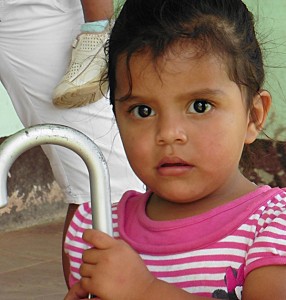 Founded in 2004, AACC is currently a grassroots all-volunteer organization providing services in seven countries to reduce the impact of poverty. The efforts of AACC utilize the CEPET program model, created by Founder Deborah Young, PhD, which allows each international community to self-determine its greatest needs. AACC then collaborates to design participatory projects to help communities support themselves. Programs and projects focus on empowering women. Milestones include achieving 501C3 status in 2007, and attaining legal NGO status in Nicaragua in 2012 – a feat requiring 4.5 years of filing.
Founded in 2004, AACC is currently a grassroots all-volunteer organization providing services in seven countries to reduce the impact of poverty. The efforts of AACC utilize the CEPET program model, created by Founder Deborah Young, PhD, which allows each international community to self-determine its greatest needs. AACC then collaborates to design participatory projects to help communities support themselves. Programs and projects focus on empowering women. Milestones include achieving 501C3 status in 2007, and attaining legal NGO status in Nicaragua in 2012 – a feat requiring 4.5 years of filing.
AACC’s projects empower primary caregivers and target community-specific problems which have included food sustainability, vitamin distribution, hospital and school construction, early childhood education, scholarships and ending sex trafficking. AACC focuses on international services to those living below the poverty line with compromised access to healthcare, education, potable water, nutrition or sustainable food sources. Projects typically take place in countries where at least 50 percent of the population is under age 25, and attendance at secondary school is less than 50 percent. Projects primarily serve women and children, with a focus on empowering women.
Where They Work
Jalapa, Nicaragua is located in the northern portion of the country, near Honduras. In Jalapa, 53 percent of the population is younger than 24 years of age. The area is primarily Roman Catholic and most residents are Mestizo (mixed Amerindian and white). Almost half of residents (42.5 percent) live below the poverty line. Half of Jalapa residents are illiterate compared to 27 percent in other Nicaraguan areas. Healthcare needs are dire – 90 percent of Jalapa residents using public healthcare are underserved or have limited access to medical services.
Land use in Nicaragua is primarily agricultural. Deforestation, soil erosion and water pollution are important issues affecting the country’s environmental health. It is the poorest country in Central America and the second poorest in the Western Hemisphere, with widespread underemployment and poverty.
A Closer Look at Kangaroo Care
An important part of the New Mothers Education Project is training in kangaroo care. This model is highly effective, proven and free.
The first weeks of any baby’s life can be challenging, but when the baby is born prematurely or suffers from low birthweight because of inadequate prenatal care, the challenges can be life-threatening. According to UNICEF, 15 million preterm infants are born every year, and one million die from the complications (1). Around the world, newborn fatalities make up almost half of the deaths of children under 5 (2). Caring for at-risk babies in countries with state-of-the-art equipment and expensive specialist treatment increases survival rates, but in the developing world, where newborn intervention is most needed, such facilities can be prohibitively expensive or simply nonexistent.
One of the most effective therapies in helping low-birthweight babies to thrive, however, turns out to be one of the cheapest and most readily available. It is known as kangaroo mother care, and it has shown remarkable success in improving the outcomes for many at-risk newborns in even decidedly basic environments. By providing immediate and sustained skin-to-skin contact between mother and baby, this method mimics the closeness a baby kangaroo enjoys from within a mother’s pouch.
Very soon after birth – provided a baby is breathing on his own and shows no other form of distress – the newborn is placed on the mother’s chest, wearing little beyond a diaper and a hat. As the baby lies nestled there, bundled warm against the mother’s skin – for days, weeks or months – many essential health benefits begin to accrue. Kangaroo mother care has proven to help regulate babies’ body temperature, steady heart rates and improve breathing. The proximity of parent and child also promotes frequent breastfeeding, lowers infection rates and enhances the quality of sleep (3).
In the late 1970s, a pair of pediatricians in Bogota, Columbia, developed the kangaroo mother care technique in response to the shortage of incubators needed for low birthweight babies and the distress created when babies and mothers were separated during specialized care. The results of a treatment that might seem instinctive have been subjected to 20 years of research, and the method is now widely embraced as an effective tool by the World Health Organization, UNICEF and healthcare professionals everywhere.
Kangaroo mother care is as affordable as it is effective. Compared to neonatal intensive care wards, the technique requires very little in the way of expense. Slings or blankets are used to keep a baby close once the mother is on her feet again, but they can be fashioned with many different kinds of soft, stretchy fabric, and remain a simple, low-tech solution. The mothers of at-risk babies do need support to learn about kangaroo mother care and to feel confident in providing it, however, but this is where an organization like AACC and its New Mothers Project comes in. Through trained healthcare workers, the New Mothers Project will offer an ongoing source of information and encouragement to the women of Jalapa, Nicaragua. UNICEF has emphasized that training programs like these are the best way to promote and prolong this sustainable and highly effective therapy in developing countries (4).
Source Materials
Sources: 1. UNICEF, “In Haiti, kangaroo mother care helps stabilize the health of premature babies,” http://www.unicef.org/health/haiti_66377.html. 2. Save the Children, “Newborn Health” fact sheet, http://www.savethechildren.org/atf/cf/%7B9def2ebe-10ae-432c-9bd0-df91d2eba74a%7D/NBH_FACTSHEET.PDF. 3. World Health Organization, Kangaroo Mother Care: A Practical Guide http://apps.who.int/iris/bitstream/10665/42587/1/9241590351.pdf. 4. UNICEF, “Kangaroo mother care in Ghana,” http://www.unicef.org/sowc09/docs/SOWC09-Panel-3.5-EN.pdf.

